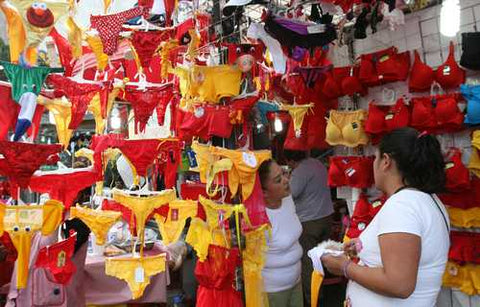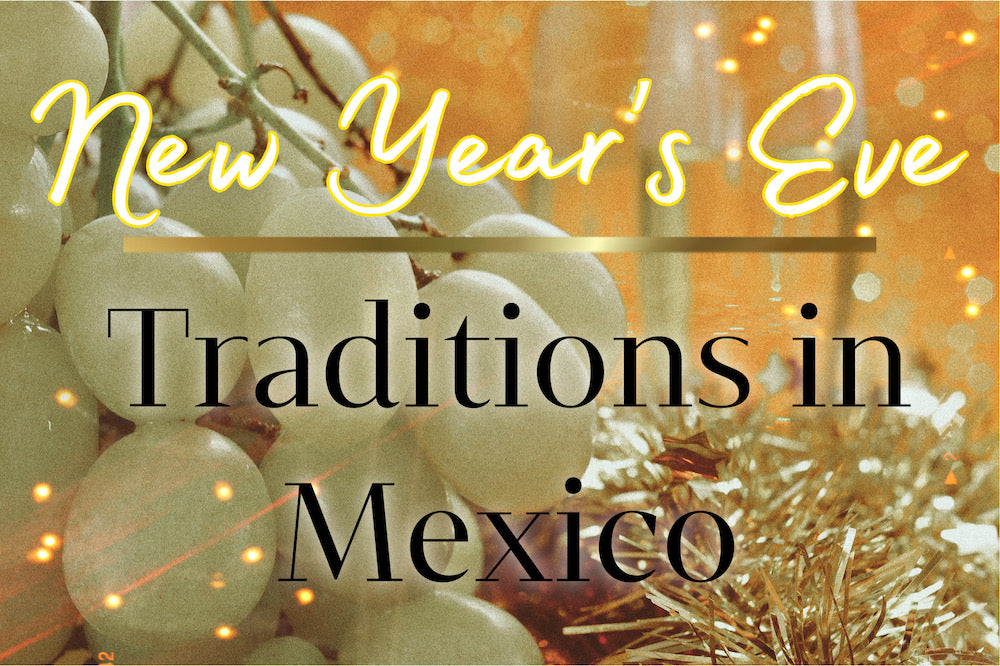This year will soon end and, surely, you already know the ways in which you will celebrate the beginning of a new year and the end of the old one, but do you know how this day is celebrated in Mexico? This short journey of time is lived to the fullest and, for many, it is full of rituals, customs, and traditions filled with hope for the new chapter.
Although, tearing apart the last page of our old calendar does not pose a solution to our problems or that the world will follow a better course, there is a charm in imagining that with the night of December 31st a cycle is closed that provides us with the opportunity to reinvent ourselves.
The same as in the US and many places around the world, in Mexico the welcoming of the New Year is considered a holiday. On this day, both the end of one cycle and the beginning of a new one are commemorated. New Year’s Eve celebrations usually begin to be held on December 31 and runs through the early morning of January 1. Being a festive date, Mexicans take advantage of the day to spend it with their friends and family.
It is not surprising that for Mexicans, as well as for others around the world, beyond the massive parties and fireworks, the New Year is surrounded by rituals to attract good luck, love, prosperity and, overall to wish that the coming year will be more favorable than the last one.
Today we have gathered a list of the unique rites and customs that people in Mexico usually perform on New Year's Eve. Of course, many of these customs are not unique to Mexico nor do they apply to all Mexicans, but this list includes the best known and special traditions that many Mexicans know and have done at some point to start this new chapter!
Toasting with 12 Grapes at Midnight
The second the clock turns to 12, people gather around and make a toast with a glass full of 12 grapes, preferably seedless. According to tradition, you should eat one grape for each month of the following year, while making a wish, giving you a total of 12 wishes. For some, it is considered good luck to be the first one to finish their grapes, so it is part of the tradition to finish them fast, making it seem an extreme eating sport.
Wearing Colored Underwear
Love or money? You choose what should dominate this coming year. According to tradition, wearing red underwear on New Year's Eve attracts love for the next year. On the other hand, wearing yellow underwear symbolizes the attraction of economic prosperity, a job promotion or a new job. Those who believe in this tradition say that these garments should be worn inside out and changed back to its right way after midnight so that all wishes come true. Moreover, the custom of colored underwear says that these must be gifted by someone else because, if they are bought, the desired effect will not be fully obtained. There are plenty more color variations, such as green for health, white for peace and harmony, blue to have projects fulfilled, and black for sexuality.

Mexican Market on New Year's Eve Selling Colored Underwear
Eating Lentils
On New Year's Eve, Mexicans tend to eat lentils. These are related to coins, so they are understood as a symbol that attracts economic abundance.There is another variation that also includes throwing them around like confetti.
Walking with a Suitcase around the Block (or Down the Street)
Do you want to go on a trip in the next year? The suitcase ritual consists of walking with a suitcase around the block at midnight to attract many trips in the new year. There will be many people on the street, but it is the cost that must be paid to visit new horizons. A variation for this tradition consist of simply putting the suitcase outside your door, especially in places where walking with a suitcase is not that easy.
Cleaning and/or Renovating the Home
Yes, there is a lot of mess during the party, but it is not for cleaning. Rather, if you had a not so favorable year, a sweep in the house will help you get rid of the negative energies that the old year left you. This tradition is related to sweeping and removing the old, negative energy and bad luck in order to let new one in, also favoring the renovation of the home and the cleaning of the soul. Quite symbolic if you ask us!
Gifting an Abundance Lamb and Placing it at your Front Door
One tradition for abundance and prosperity is to gift and be gifted a little lamb. Traditions says to place this lamb at the front door of the house so that good fortune passes through. The lamb must bring a bell, usually as a collar around its neck, so that its sound helps to attract joy and prosperity. On the other hand, it should also have a red ribbon, which is also part of the collar or displayed as a cute bow, which keeps negative vibes that want to disturb the peace of the house away.
Making a List of Resolutions
Although it is hard to fulfill all of them, the truth is that these resolutions help with reflection in thinking about everything one could improve for the following year and what could have been done differently in the past one. The most common ones that we hear revolve around losing weight, exercising, traveling, getting a better job, saving more money, and sometimes finding a romantic partner. These resolutions are also sometimes part of the 12 grapes and can easily become wishes.
Burning Fireworks
Fireworks are also an important part of the tradition for this special night, people usually look out of the windows of their houses or go up to the top of the buildings to watch the light show, it is one of the traditions preferred by children in this night who are allowed to stay up past 12 only to watch the beautiful lights!

Fireworks Show at Acapulco Bay
Wishing Everyone a Happy New Year!
Right after being done with your 12 grapes, you run to find your family, friends and loved ones. Partners, parents, siblings, cousins, uncles, grandparents, and friends are the first to receive a hug wishing them the best in this new year. Tradition says that the way in which we start the year is how it will go and how it will end so it is of high importance to demonstrate our love and affection for all those that we love. In the case of being afar, what comes next is to also call those who are far away to wish them the best during the coming year.
Having said that…
El Recalentado, or Reheating Leftover Food, of January 1st and the Days that Follow
This happens from January 1 to even the 15 days that follow! It all depends on how many are in the family and how much they cooked. Many end up fed up with the same dish every day; however, others look forward to the time just to enjoy the leftover food that tastes better reheated. Going to the neighbors' houses to distribute hugs is another part of the tradition. This occurs especially in small and familiar towns where everyone knows each other very well. On January 1st, people in Mexico go to visit their neighbors to wish them a happy new year and share/have some of the leftover food that was served the previous night. What makes this even more special and makes it last so long is that Día de Reyes, is only a week after New Year’s (on January 5th-6th) so there is more food being served on these days.
In Mexico, the party to receive the New Year becomes the best opportunity to do unique traditions and rituals that are believed to attract love, prosperity, and better luck. However, it is all part of the opportunity that the end of a year and the beginning of a new one provides to reflect on the last year and start with a blank slate. It is also another day where we try to be surrounded by our loved ones that, in the end, will make it all better.
These are some of the traditions and practices that take place in Mexico as each New Year arrives. What do you think? Have you heard of any of these before? Do you know of any other traditions that we might be missing? Do you perform any rituals or have any traditions? Would you like to perform any of the ones in this list? We would love to hear from you!
--
Don't forget to subscribe to our newsletter where we make sure to share this and many more cultural content together with many more recipes, history, and artisan's profile in our attempt to highlight Lo Bien Hecho en México. Subscribing also receive exclusive promotions, gifts, first-hand look at all new products and, of course, these articles that we love to write for you all!









1 comment
Jess
Loved all of these articles! Please sign me up for the newsletter. Thanks!